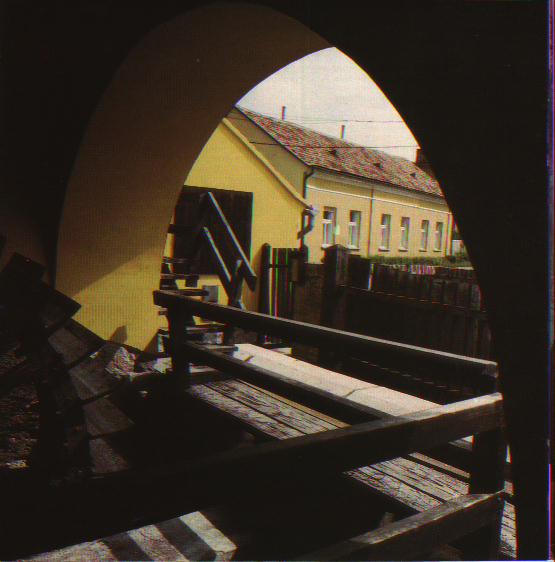 Mills
Mills 
 The
basis of Tata's development was its waters.
The
basis of Tata's development was its waters.
The town's history was determined by the presence of the waters: from the
prehistoric man, who found a home near the lukewarm springs and the building
of the aqueduct that supplied Brigetio with water, through the marshland
that maintained fishing as a way of life and as the supplier of the royal
banquets, to the Esterházys' economic endeavours. In this region, industrialization
brought a boom for two crafts that were connected with water. A registration
prepared in 1695 mentions five millers, but nine mills are know to have
worked at the time. Since the springs did not freeze in wintertime, the
mills were also used for fulling, which could be done in winter. This circumstance
attracted a lot of fullers here. The millers' guild had already existed
in 1716 and the fullers' in 1766. The Esterházys' mills were rented by
the millers but the Capuchin order also had a "fabrica" and Jakab Fellner,
as well, was allowed to build a mill for himself.
The springs have dried up since then, and with the appearance of the steam
mills, the milling industry was concentrated in the big cities. By now,
fulling has disappeared - but Tata's mills still exist. Either restored,
endowed with new functions or neglected they add to the historical atmosphere
of the town.

